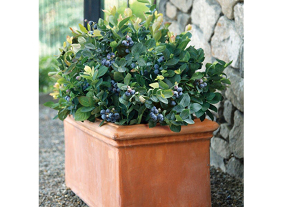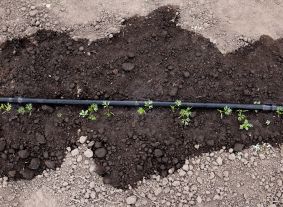BrazelBerries Peach Sorbet Blueberry Bush is Great for Small Spaces
Views: 7143

When I was a kid, my parents had maybe eight to 10 blueberry bushes in the small fruit orchard next to the house.
These were highbush blueberries—bushes that grow to about 4 feet tall. These aren’t to be confused with the lowbush blueberry that hugs and scampers across the ground like a creeping juniper and grows plentifully in the wilds of Maine. It was my job to pick the blueberries once they started producing fruit around the end of July.
What varieties did we have? I don’t know, and I don’t think my parents knew or cared, really. A blueberry bush was a blueberry bush and that was about all there was to say on the topic.
Things are a bit different nowadays. The range of blueberry bushes available go far beyond just the highbush and lowbush types. There are now blueberries that fruit at different stages of the growing season, have different growing habits and even different colors and flavors.
The Peach Sorbet Blueberry
Take for instance the new blueberry variety called BrazelBerries Peach Sorbet, part of the BrazelBerries Collection.
Standing at just 1.5 to 2 feet tall, it’s not the blueberry bush of my youth. The compact growth means it fits well in small spaces, such as in a large container on a patio or deck, or in a small city or townhouse yard. White dangly flowers produce plump, good-sized tasty berries in mid summer. Rumor has it, the berries have a slight undertone of peach flavor, too.
Not only is this an edible plant, it’s also quite beautiful as a landscape plant.
No vegetable garden? Use it as part of your landscape plantings. It’ll fit right in, and it’s the foliage that makes it so. The leaves that burst forth in spring range in color from peach to pink to orange and deep emerald. Peach Sorbet is considered to be semi-evergreen and the leaves, which hold on in all but the coldest regions, deepen to a rich purply eggplant color in winter.
Growing Conditions
The Peach Sorbet blueberry performs best in Zones 5-10. It prefers partial to full sun and a weekly watering, more often in areas with high heat and low water conditions.
Meet Ellen Wells
When you’re raised on a farm, you can’t help but know a thing or two about gardening. Ellen Wells is our expert on edible gardening.…
Ellen's Recent Posts

Asparagus






